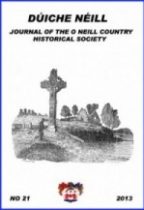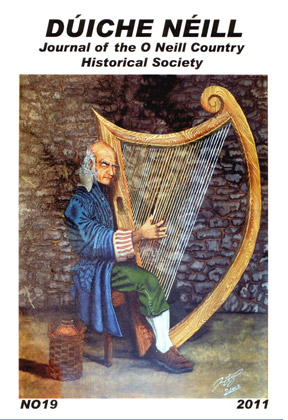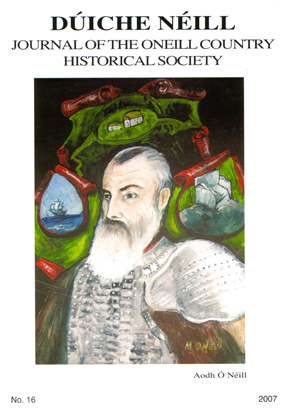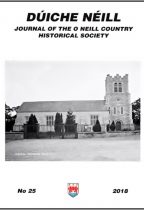Contents
Shane O Neill’s Postbag: His letters from Benburb and the woods by Proinsias O Conluain
An account of how Shane O Neill, whom the English tried to depict as an arrogant savage, wrote over forty letters to a range of important people including Queen Elizabeth I. The letters were in English, Latin and Gaelic. It is also a snapshot of political intrigue
Tullyhogue ad the O Neill inauguration chair.
by Sean O’Neill
Using the literature, especially the poetry of the time, this article establishes the importance of the site, and especially the chair, during 300 years prior to 1602
The mudwall House – by Pat Fairon
This article is based on an interview with an old man who had been involved in the erection of many such houses. The process is described in detail.
Church building in Moy
by Charles Dillon
A brief article describing the building of St John’s R.C. church and the Methodist church in the village.
Gorestown church and graveyard by Charles Dillon
Material from the ancient gravestones is documented.
Sessiamagaroll: A townland since the plantation
Art P. O’Dálaigh
The development of the townland is traced from the plantation to the present day using records left by Powerscourt and Bruce.
Who wrote “An Chuileann”?.
Proinsias Ó Conluain.
Delving into many ancient documents Ó Conluain outlines an interesting argument that the famous air may have been composed by a Benburb man.
The Ulster Canal: Alleged discrimination
by Charles Dillon.
A letter from the curate of Clonfeacle, Henry Kennedy, to Sir Henry Hardinge concerning events pertaining to the burning of Annaghagh.
Notes on the Yeomanry in County Tyrone.
Padraig O Snodaigh.
Listings of Yeomen officers in various parts of the county c.1798.
Field names in Aghaloo and Eglish.
Brendan McAnallen.
A short introduction followed by a comprehensive list of field names, their derivation and meaning.
St John’s Church of Ireland, Caledon: A brief history.
Mona Wylie.
The history of the church is traced from 1672 until the present with interesting insights into the many areas within its care.
St John’s, Caledon: cemetry inscriptions and index of names.
Mona and George Wylie.
A comprehensive list of all the gravestones including a plan of the graveyard.





